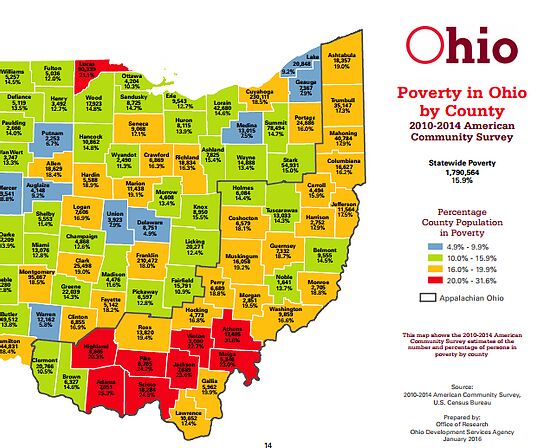How COVID-19 has affected Kent’s homeless community
March 8, 2021
COVID-19 has changed homeless services and has caused people to pay more attention to the homeless community in Kent and Ravenna.
According to endhomelessness.org there were 10,345 homeless people in Ohio as of 2018. Kent’s homeless population has lived under the 59 bridge, by the railroad tracks and along the bike trails. Nearby shelters, community members and Kent State students have helped in the past.
Becky Lindsey, owner of The Pub in Kent, expressed her concerns about members of Kent’s homeless community as she noticed an increase in homeless people visiting her restaurant.
“There’s no place to go,” Lindsey said.
According to Jenn Matlack, the director of Housing and Homeless Services in Ravenna, there may not be an increase in homelessness, but rather an increase in sightings.
“There are usually less than 20 chronically homeless in our community,” Matlack said. “It’s more visibility I think. People are paying attention more.”
Lt. Michael Lewis of the Kent Police Department held a similar belief.
“We’ve had some incidents in the past few months where bonfires have grown rather large under the 59 bridge and those required a response,” Lewis said. “Aside from that I can’t say I’ve seen an increase in population.”
Organizations like Kent Social Services, The Miller House, The Haven of Portage County and Catholic Charities have been doing their best to provide as much help as needed.
A service site in Ravenna, Catholic Charities, helps those in need of emergency services. Catholic Charities serves all of Portage county but George Garchar, executive director of Catholic Charities, believes the places most affected are Ravenna and Kent.
“While it did not increase dramatically, we know from others that need has increased,” Garchar said.
Services provided by Catholic Charities include basic needs assistance, utility assistance, food pantries, seasonal assistance and more. One popular service of theirs is the Caritas Cafe.
The Caritas Cafe is a location that serves free breakfast next door to the Catholic Charities Ravenna office.
“Although the primary focus is on low income and homeless individuals, all are welcome at the Café,” Catholic Charities website reads.
Caritas Cafe had around 9,000 visits in 2017, a “typical number” according to Garchar. However, the Caritas Cafe has been shut down since March 2020 due to COVID-19.
People facing food insecurity still have access to other local resources such as the KSS food pantry located in downtown Kent and Campus Kitchen food pantries located on the Kent State campus.
Justin Smith, chief santarian for Kent City Health Department, also visits the homeless community in Kent weekly to ensure they have the essential materials.
Smith explained there are still places to receive food, but the homeless in Kent miss the “community atmosphere” offered by Caritas.
For housing, individuals and families can go to the Miller Community House. The house works as an emergency shelter and offers supportive services for people facing a housing crisis.
Bill Bowen, food coordinator for the KSS food pantry, wants people to be aware that these services are available. The food pantry is income qualified, meaning you must show a financial need for help, but circumstances involving COVID have loosened the requirements.
“Even if you’re working, you still might qualify,” Bowen said.
More people have been utilizing the pantry over the course of the pandemic; however, Bowen does not believe this correlates with an increase to the homeless population.
“We’ve been seeing more people for the pantry, but we have not been seeing more homeless people,” Bowen said. “The population hasn’t changed all that much.”
One possible reason for the lack of change may be the government’s moratorium, or temporary halt of evictions through March 31.
The moratorium protects individuals facing eviction for nonpayment of rent. People seeking to utilize the moratorium must declare that they “have used best efforts to obtain all government assistance for rent or housing.” Further requirements include: being income eligible and having no other available housing options.
Housing and rent assistance can be received through Family and Community Services programs such as: Housing and Emergency Support, Portage Area Transitional Housing and Supportive Services for Veteran Families.
Financial assistance programs increased by 10 percent in participation during the pandemic.
Matlack noted that the Miller Community House saw a decrease in usage during 2020. That situation may change once the government no longer halts evictions.
“Once the moratorium lifts we might see more people finding themselves homeless if we can’t get them caught up,” Matlack said. “We’re trying to stay proactive to keep people housed.”
One major concern for Kent every year is the cold weather. This issue has become even more complicated due to the pandemic.
“More people have been exposed to weather than in the past because of COVID protocols,” Smith said in reference to decreased capacities and local shutdowns.
The Haven of Portage County hosts a warming center to provide a safe and warm place for homeless people to get out of the cold weather. The warming center is open during the winter months when temperatures drop below 20 degrees.
Anne Marie Noble, executive director of The Haven of Portage County, explained how volunteers are taking temperatures of everyone who visits and ensures social distancing rules are followed while the center is being used.
“I think education is extremely important,” Noble said. “The folks that are homeless do not want a hand out — they want a hand up.”
Chloe Zofchak covers the City of Kent. Contact her at [email protected].
Anthony Elder covers crisis, recovery, hunger and help. Contact him at [email protected].












